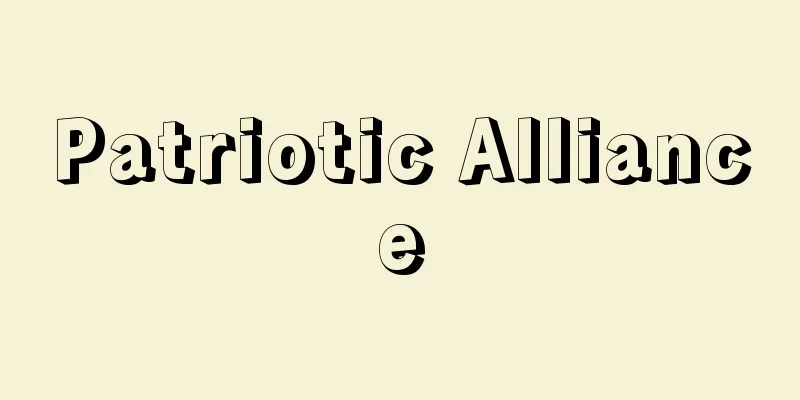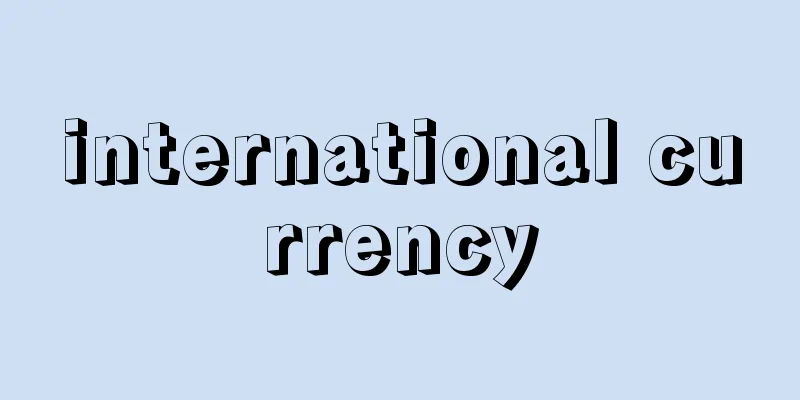Neutrality (English spelling)

|
When a third party stands outside of a dispute or confrontation and maintains an impartial position, it is generally called neutrality. In international law, neutrality is the status that a third country that does not participate in a war has toward the belligerent countries. Neutrality is a status that is specifically related to war, and is not simply a status of uninvolved or non-negotiating. [Yasuo Ishimoto] History of NeutralityIt is said that the idea of neutrality was almost nonexistent in the Greek and Roman eras. The predominant idea there was either friend or enemy (ally). In the Middle Ages, wars often took the form of private wars between feudal lords, which were always localized and other lords were not involved. In contrast, the idea of neutrality developed among the Mediterranean merchant class at the end of the Middle Ages, and an independent customary law based on the freedom of neutral commerce was formed. This shows that the feudal self-sufficient economy did not create the association of third countries with war, and commodity trading capital was the basis for creating a neutral legal system. In the 16th century, world commerce developed dramatically, commercial capital became an important element of state power, and the European international system, which was composed of multiple sovereign states, was established. This provided the conditions for the establishment of a neutrality system. At this stage, the combination of the freedom of neutral commerce on the one hand and the impartiality (neutrality) of third countries as a prerequisite for this, on the other hand, began to take hold. This situation became common by the end of the 18th century and was firmly established in the 19th century, and can be seen as being based on the stability of world commerce that came with the maturation of industrial capital. In the process leading up to this, armed neutrality, the neutrality of the United States, and the neutrality of the Scandinavian countries and Switzerland played a major political role. Armed neutrality was established twice, in 1780 and 1800. The first time was during the American War of Independence, and the second time was during the Napoleonic Wars. In both cases, at the suggestion of Russia, neutral European countries cooperated to set up five principles regarding neutrality and freedom of commerce, prepared naval forces, and demanded compliance with these principles, achieving considerable success. It is called armed neutrality because the demands were enforced with the backing of military force. On the other hand, the United States repeatedly enacted neutrality laws from 1793 to 1815, striving to maintain its neutrality in European wars. These had an immeasurable impact on the establishment of the neutrality system in later times. In addition, the Napoleonic Wars encouraged small European countries to clarify the concept of neutrality based on the principles of impartiality and avoidance, leading to the establishment of the traditional neutrality policy of Scandinavian countries and permanent neutrality in Switzerland. [Yasuo Ishimoto] Institutionalization of Neutrality LawFrom the late 19th century to the early 20th century, a series of international legislations on neutrality were enacted. The Paris Peace Conference held in 1856 after the Crimean War adopted the Paris Declaration on maritime neutrality laws, which was ratified by many countries. The Hague Peace Conferences were held in 1899 and 1907, and succeeded in codifying into treaties the obligations of neutral nations in the event of war on land and at sea. Furthermore, in 1909, the London Declaration was signed by ten major maritime nations. Although this declaration never officially came into force, it was of great significance as a codification of customary neutrality laws relating to capture at sea. Thus, the neutrality law was institutionalized in detail by the beginning of the 20th century. According to it, third countries were free to choose whether or not to participate in a war between other countries, but as long as they did not participate in the war, they had to maintain a neutral status. There was no choice between war or neutrality. A neutral third country was obligated to be impartial toward both belligerents and to avoid war itself. Therefore, neutral countries were obligated to bear special obligations not found in peacetime, in other words, neutrality obligations. What is called neutrality law in international law was nothing other than the obligations of a neutral country. These obligations were divided into three categories. First, a neutral country must prevent its territory from being used by a belligerent country to wage war (obligation to prevent). Second, a neutral country must not supply troops, weapons, loans, etc. to a belligerent country (obligation to avoid). Thirdly, while in principle neutral nations' nationals were free to engage in commercial activities with the territories of belligerent nations, belligerent nations could seize and confiscate neutral nation ships engaged in the supply of contraband goods, communication with blockaded waters, or military assistance to enemy nations. Neutral nations were required to tolerate the exercise of such rights by belligerent nations (duty of toleration or duty of acquiescence). Thus, the obligations of neutral nations consisted of various obligations based on the fundamental principles of fairness towards belligerent nations and avoiding war. However, soon after the neutrality laws were precisely written in the 20th century, they entered a period of serious uncertainty. In both world wars, only a few countries were able to maintain their neutrality until the end. Some neutral countries, such as the United States before entering the war, openly supported one of the warring countries. The warring countries often ignored the rights of so-called neutral countries. On the other hand, the illegality of war steadily progressed through the Covenant of the League of Nations, the Kellogg-Briand Pact, the Charter of the United Nations, and other treaties, and as the idea of collective security took root, the neutrality system began to be unstable in principle. The legitimacy of maintaining an impartial position between the aggressor and victim countries was questioned, and joint sanctions against the aggressor countries and mutual assistance for the victim countries were fundamentally required. However, collective security does not function according to its ideal in the current international society, so it cannot be said that there is no room for neutrality. However, it cannot be denied that its function is quite limited. In fact, there have been almost no cases in recent armed conflicts where neutrality legislation has been considered to have been applicable. [Yasuo Ishimoto] Neutrality in peacetimeAs if inversely proportional to the instability of neutrality in wartime, and especially neutrality legislation, the idea of neutrality before war has matured since World War II. In a world in which a military alliance network with the United States and the Soviet Union at its apex covers a large part of the world, and in which East-West tensions exist constantly, coupled with the development of weapons of mass destruction, neutrality has come to be spoken of as a state of freedom from such opposing military alliances in peacetime rather than in wartime. The theory of unarmed neutrality discussed in Japan is part of this trend. However, with the collapse of the socialist systems of the Soviet Union and other Eastern European countries and the end of the Cold War, the function of a "neutral country" has also declined accordingly. [Yasuo Ishimoto] "Studies on Neutrality" (1961), edited and published by the Japan Institute of International Affairs ; "Historical Studies on the Neutrality System" by Yasuo Ishimoto (1958, Yuhikaku) [Reference items] | | |Source: Shogakukan Encyclopedia Nipponica About Encyclopedia Nipponica Information | Legend |
|
紛争や対立に対して、第三者がその局外にたち、公平の立場を維持することを、一般に中立という。国際法上の用語としての中立は、戦争に参加しない第三国が、交戦国に対して有する地位のことである。中立は、戦争に対して特殊に関係づけられた地位であり、単に無関係や没交渉の地位ではない。 [石本泰雄] 中立観念の歴史ギリシアやローマの時代には中立の観念はほとんどみられなかったといわれている。そこでの支配的な観念は、敵かそれとも友(同盟者)かであった。中世にあっては、戦争は封建諸侯の間の私戦の形態をとることが多く、それはつねに局地化され、他の諸侯はこれに対して無関係であった。それに反して中世末期には地中海商人層の間で中立の観念が成育し、中立商業の自由を機軸とする自主的な慣習法が形成された。このことは、封建的自給経済は、戦争に対する第三国の関係づけを生まず、商品取引資本が中立の法制度を生み出す基礎であったことを物語っている。 16世紀に入って世界商業が飛躍的に発展し、商業資本が国家権力の重要な要素となり、やがて複数の主権国家を構成要素とするヨーロッパ国際システムが成立するに及んで、中立制度の確立の条件が与えられた。この段階で、一方において中立商業の自由と、他方においてその前提としての第三国の公平性=中立性とが、組み合わされて、しだいに固定化する状況が現れ始めている。この状況は18世紀末までに一般化し、19世紀には揺るぎなく確立したが、産業資本の成熟に伴う世界商業の安定がその基礎にあったとみることができる。そこに至る過程で政治的に大きな役割を果たしたのは、武装中立、アメリカの中立ならびにスカンジナビア諸国とスイスの中立である。 武装中立は1780年と1800年の再度にわたって成立した。第1回は、アメリカ独立戦争に際して、第2回は、ナポレオン戦争に際して、いずれもロシアの提唱でヨーロッパの中立諸国が協力して、中立商業の自由に関する五原則を掲げ、海軍力を準備してその遵守を要求し、かなりの成果を収めた。軍事力を背景として要求貫徹を図ったため武装中立といわれる。他方でアメリカは、1793年から1815年に至るまで再三中立法を制定し、ヨーロッパの戦争に対する中立の維持に努めた。これらは後世の中立制度の確立に計り知れない影響を与えている。このほか、ナポレオン戦争は、ヨーロッパ諸小国に公平と回避を原理とする中立の観念の明確化を促し、スカンジナビア諸国の伝統的中立政策や、スイスの永世中立化の成立を導いた。 [石本泰雄] 中立法規の制度化19世紀後半から20世紀初めにかけて中立に関する国際立法が相次いで行われた。クリミア戦争後に開かれた1856年のパリ平和会議は、海上中立法規に関するパリ宣言を採用し、多くの諸国の加入をみた。1899年と1907年にはハーグ平和会議が開かれ、陸戦や海戦の場合における中立国の義務を詳しく条約化することに成功した。さらに1909年には主要海上国10か国によるロンドン宣言が調印された。この宣言は正式に発効しなかったとはいえ、海上捕獲に関連する慣習中立法規の文章化として重要な意義を有するものであった。 こうして、中立法規は20世紀初めまでに詳細にわたって制度化された。それによれば、他の国家の間の戦争に参加するか否かの選択は第三国の自由に残されていたが、しかし、戦争に参加しない以上、第三国は中立の地位にたたねばならなかった。戦争か、中立か、そのほかの選択はありえなかった。中立の地位にたつ第三国は、双方の交戦国に対して公平の態度をとるとともに、戦争そのものに対して回避の態度をとることを義務づけられた。そのため、中立国は平時にはみられない特殊な義務、いいかえれば中立国義務を負う。国際法で中立法規といわれるものは、中立国義務を内容とするものにほかならなかった。その義務は三つに分類される。第一に、中立国は自国の領域が交戦国によって戦争遂行のために利用されるのを防止しなければならない(防止義務)。第二に、中立国は交戦国に対して兵員・武器・借款などを供給してはならない(回避義務)。第三に、中立国の国民が交戦国領域との間で行う通商活動は原則として自由ではあるが、戦時禁制品の供給、封鎖水域との交通、敵国への軍事的援助に従事する中立国船舶については、交戦国はこれを捕獲・没収することができる。中立国はこのような交戦国の権利行使を容認しなければならない(寛容義務または黙認義務)。このように中立国義務は、交戦国に対する公平と、戦争からの回避を基本原理とするさまざまの義務からなっていた。 ところが、20世紀に入って中立法規が精密な文章化を受けたあとまもなく、それは深刻な動揺期を迎える。両大戦では、最後まで中立を維持できた国は少数であった。中立国でも、参戦以前のアメリカのように交戦国の一方を公然と援助する国が現れた。交戦国の側でも、いわゆる中立国の権利を無視することがしばしばであった。他方で、国際連盟規約、不戦条約、国際連合憲章などによって戦争の違法化が着実に進み、さらに集団安全保障の観念が定着するに及んで、原理的にも中立制度の動揺現象が進行した。侵略国と犠牲国との間にたって公平の地位を維持することの正当性が疑われ、侵略国に対する共同制裁と、犠牲国に対する相互援助が原理的に要請されるようになったからである。もっとも、集団安全保障といっても、現在の国際社会では、その理念型どおりに機能しているわけではないから、中立の余地が絶無になったということはできない。しかしそれにしても、その機能がかなり限定されたものとなっていることは否定できない。実際にも最近の武力紛争において中立法規が妥当したと思われる場合はなきに等しい。 [石本泰雄] 平時における中立戦時における中立、とりわけ中立法規の動揺と反比例するかのように、第二次世界大戦以後では戦時に至らぬ段階での中立の観念が成熟するに至っている。米ソをそれぞれ頂点とする軍事同盟網が世界のかなりの部分を覆い、大量破壊兵器の発達と相まって、恒常的な東西緊張関係が存在するなかで、中立は、戦時よりはむしろ平時におけるこのような対立軍事同盟からの自由の地位として語られるようになった。日本で論議された非武装中立論もその流れにある。しかしソ連をはじめ東欧諸国の社会主義体制が崩壊し、東西冷戦も終結するにおよび、「中立国」の機能もそれだけ減退するに至っている。 [石本泰雄] 『日本国際問題研究所編・刊『中立主義の研究』(1961)』▽『石本泰雄著『中立制度の史的研究』(1958・有斐閣)』 [参照項目] | | |出典 小学館 日本大百科全書(ニッポニカ)日本大百科全書(ニッポニカ)について 情報 | 凡例 |
Recommend
Fuller, Richard Buckminster
Born July 12, 1895 in Milton, Massachusetts. [Died...
Hadith - Hadith (English spelling)
Generally it means "story" or "rep...
Plover - Chidori
[1]① Many birds. Countless birds. Momodori. Momoch...
Bonito and tuna fishing boats
A general term for fishing boats that use pole-and...
On the other hand
[1] 〘noun〙① one direction; one quarter; a certain ...
Sutra Enlightenment - Kyogaku
1395-1473 A monk from the Muromachi period. Born ...
U Thong (English spelling)
An ancient ruin in central-western Thailand. Locat...
New Industrial City
This refers to cities designated as targets for r...
Tama
A tanka magazine. Presided over by Kitahara Hakus...
Pictothyris picta (English spelling) Pictothyris picta
… Since their appearance at the beginning of the ...
Magnol, P. (English spelling) MagnolP
...A general term for the world-famous flowering ...
Sendai River
A river that flows north through eastern Tottori P...
History of the English Church
…As a result of the famous debate at the Council ...
Emperor Jing
187 BCE - 141 BCE China, former Han Emperor Liu Qi...
Kassák L. (English notation) KassakL
…On the other hand, Gárdony Géza (1863-1922) and ...









